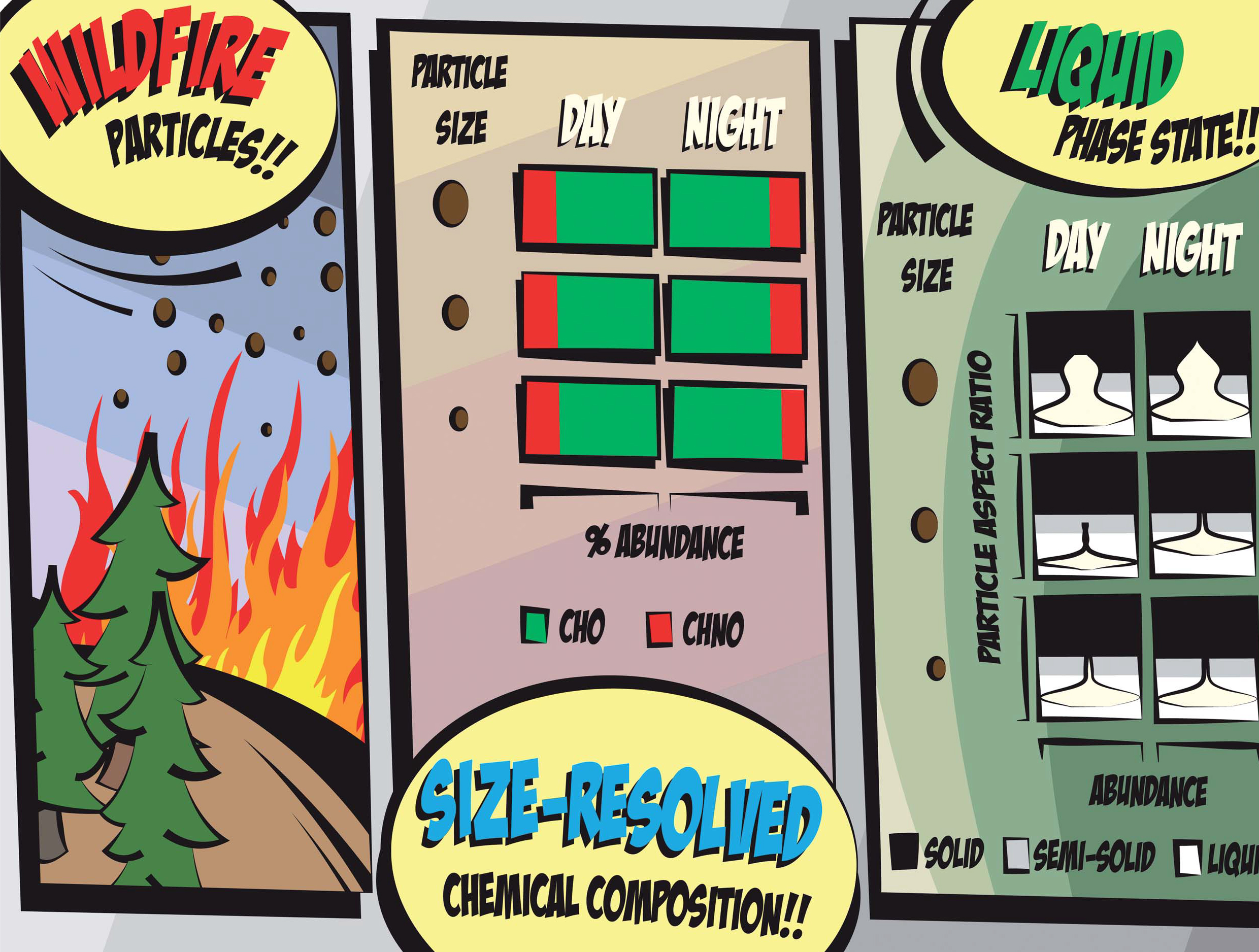Wildfire smoke substantially deteriorates air quality and has significant impacts on our climate. Emissions from wildfires keep increasing and models predict more wildfires in coming years due to warm, dry conditions. However, because of the complex nature of wildfire (temperature, moisture of fuel, fuel type) and the varieties of particles they emit, the environmental impacts of wildfires are still not well understood.
“Our study shows the importance of studying real-world wildfire-derived particles that are atmospherically aged and how the compositions of these particles may define their lifetime in the atmosphere,” said Swarup China, a chemist at Pacific Northwest National Laboratory and principal investigator of this study. “If we understand the mechanisms of atmospheric aging and how these particles evolve in the atmosphere, we will have better predictions of their climatic and health impacts.”
The reserchers collected particles of various sizes, during the day and at night, from an August 2021 Pacific Northwest wildfire, and investigated the interplay between particle size, phase state (solid, semi-solid or liquid), and chemical composition. Using mass spectrometry and multimodal chemical imaging techniques, including scanning transmission x-ray microscopy with near-edge x-ray absorption fine structure spectroscopy (STXM-NEXAFS) at Advanced Light Source (ALS) Beamline 5.3.2.2, they obtained information about chemical composition, mixing state, and phase state of the particles. In addition, modeling tools were utilized to understand the particles’ evaporation kinetics.
Surprisingly, there wasn’t much difference between day and nighttime samples, even at a molecular level, and composition was found to be largely independent of particle size, with differences observed in phase state and composition for the largest size range only. While a detailed mechanism for these observations is still needed, the researchers speculate that the samples were substantially wildfire-saturated, and that a substantial amount of atmospheric aging may have occurred.
In general, the importance of understanding wildfire-derived particles is rapidly growing alongside the escalating climate crisis. Studies such as these are needed to accurately represent these particles as they age in the atmosphere, in order to accurately model their impact on the climate.

G.W. Vandergrift, N.N. Lata, S. Mathai, A. Ijaz, Z. Cheng, M. Shrivastava, J. Zhang, A.S.M. Shawon, G. Kulkarni, L.R. Mazzoleni, W. Kew, and S. China, “Case study evaluation of size-resolved molecular composition and phase state of carbonaceous particles in wildfire influenced smoke from the Pacific Northwest,” Environ. Sci.: Atmos. 3, 1251 (2023), doi:10.1039/D3EA00058C.